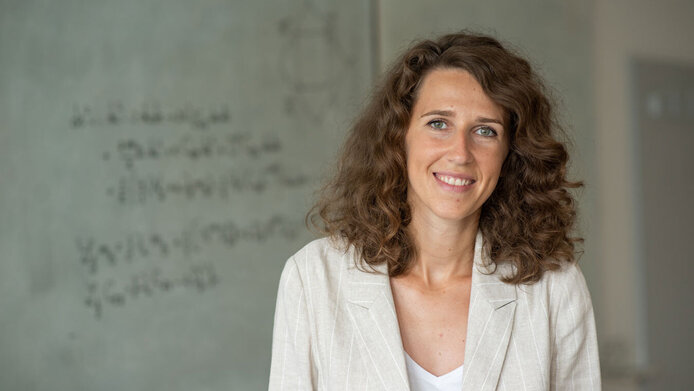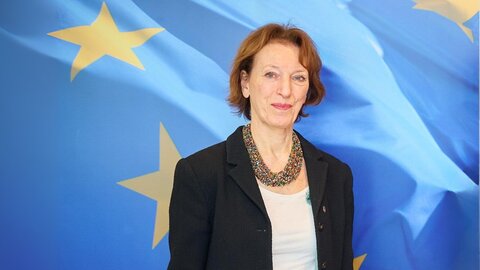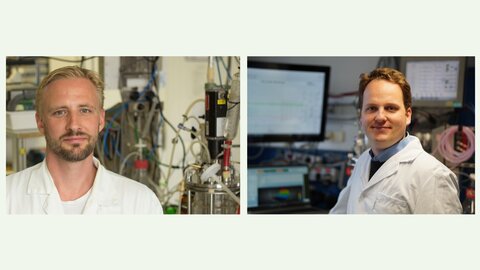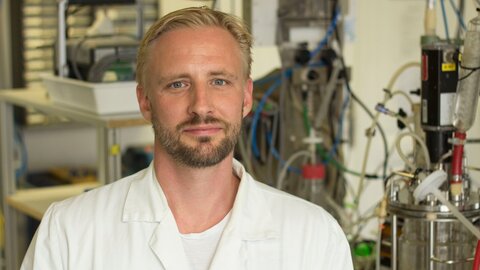A gap in Hawking’s theorem

Stephen Hawking’s theorem says that black holes have no hair. What does that mean?
Laura Donnay: This refers to the strange fact that, in certain respects, black holes are the simplest objects we can think of. Three numbers – mass, charge and spin rate – are enough to characterise them uniquely. In order to describe a star you need a great deal more information, its chemical composition, for instance. If you look only at the theory of relativity, black holes are extremely simple. But there’s also quantum mechanics, and from that perspective black holes appear to contain more information than any other object in the universe. They have extremely high entropy, or, in other words, they are extremely disordered. Black holes are at the centre of a few of the most exciting puzzles of physics. If we manage to understand where the entropy comes from, it would be a giant step towards understanding the interplay between gravity and quantum mechanics.
So where does your project come in?
Donnay: I have found out that while Hawking’s theorem is valid, there’s a gap in it, in the sense that there is a very subtle structure that can nevertheless appear. Hawking himself has sketched out this idea in a very short, two-page long, paper. In the context of my PhD thesis I achieved the first quantitative proof of this fact. It turned out that special symmetries exist at the edge of a black hole, namely near the event horizon, which is the point of no return beyond which nothing can escape the black hole. Hawking and his collaborators Perry and Strominger called that effect “soft hair”. This very subtle effect had been totally missed previously.
What is the relevance of these symmetries?
Donnay: Actually, there are an infinite number of symmetries. In physics, symmetries have enormous relevance because they restrict the behaviour of a system. An important theorem by the mathematician Emmy Noether says that whenever there are such symmetries there are always physical parameters that are conserved – the conservation of energy is one example. And in this case we even have an infinite number of symmetries. That is a powerful tool for us, even if we don’t yet fully understand all the implications of these new conservation parameters.
The relationship between gravitation and quantum physics is considered to be one of the biggest puzzles of physics, and the search for its solution has been going on for a long time. Do you think that a breakthrough will be possible in your field?
Donnay: I hope so. It is surprising that we are only now beginning to understand what the symmetries of black holes really look like. We thought we had understood black holes to a large extent, but had completely missed the soft hair. We are now slowly starting to unravel the various aspects. It is my hope that in the process we will discover the origin of the quantum properties of black holes – the source of their major disorder.
What will the START Award enable you to do?
Donnay: I am now in a position to set up my own working group here in Vienna. That is an amazing opportunity to establish myself as an independent researcher in the field and with the help of a team I can pursue different approaches in parallel and look at the interplay between these approaches. But the very first thing will be to look at the properties of the discovered symmetries and find out what they constrain — and how they can capture that much information.
This is a big step in your career. What is it about working as a researcher that motivates you?
Donnay: Beyond the motivation provided by the discipline itself it is asking questions that are almost naïve, like the ones we asked as kids. What is space? What is time? Those are very basic questions, easy to ask and very hard to answer. In my everyday work motivation comes from working with others at the blackboard, sharing ideas. And if suddenly everything starts to make sense and you can share this discovery with someone, that’s an amazing feeling.
Laura Donnay is a physicist at TU Wien. She is interested in black holes, and particularly in quantum effects in the proximity of the event horizon. She has won a variety of awards, including the Marie Sklodowska-Curie Individual Fellowship, in the context of which she has been conducting research in Vienna since 2019.
About the project
In her START project “Black hole soft hair and celestial holography” Laura Donnay is exploring the properties of black holes, which she herself has been the first to prove. These properties are symmetries occurring near the event horizon. She intends to answer the question why black holes are so disordered from the point of view of quantum mechanics (i.e. contain so much information), but very simple and orderly from the point of view of relativity theory. Black holes are at the focus of looking for a link between relativity theory and quantum physics, because both theories are necessary to describe the extreme conditions prevailing in black holes.
The START Prize
The START Programme of the Austrian Science Fund FWF is aimed at outstanding young researchers, giving them the opportunity to plan their research over an extended period and with a high degree of financial security. It is endowed with up to EUR 1.2 million and is one of Austria’s most prestigious and most highly endowed awards alongside the Wittgenstein Award.





